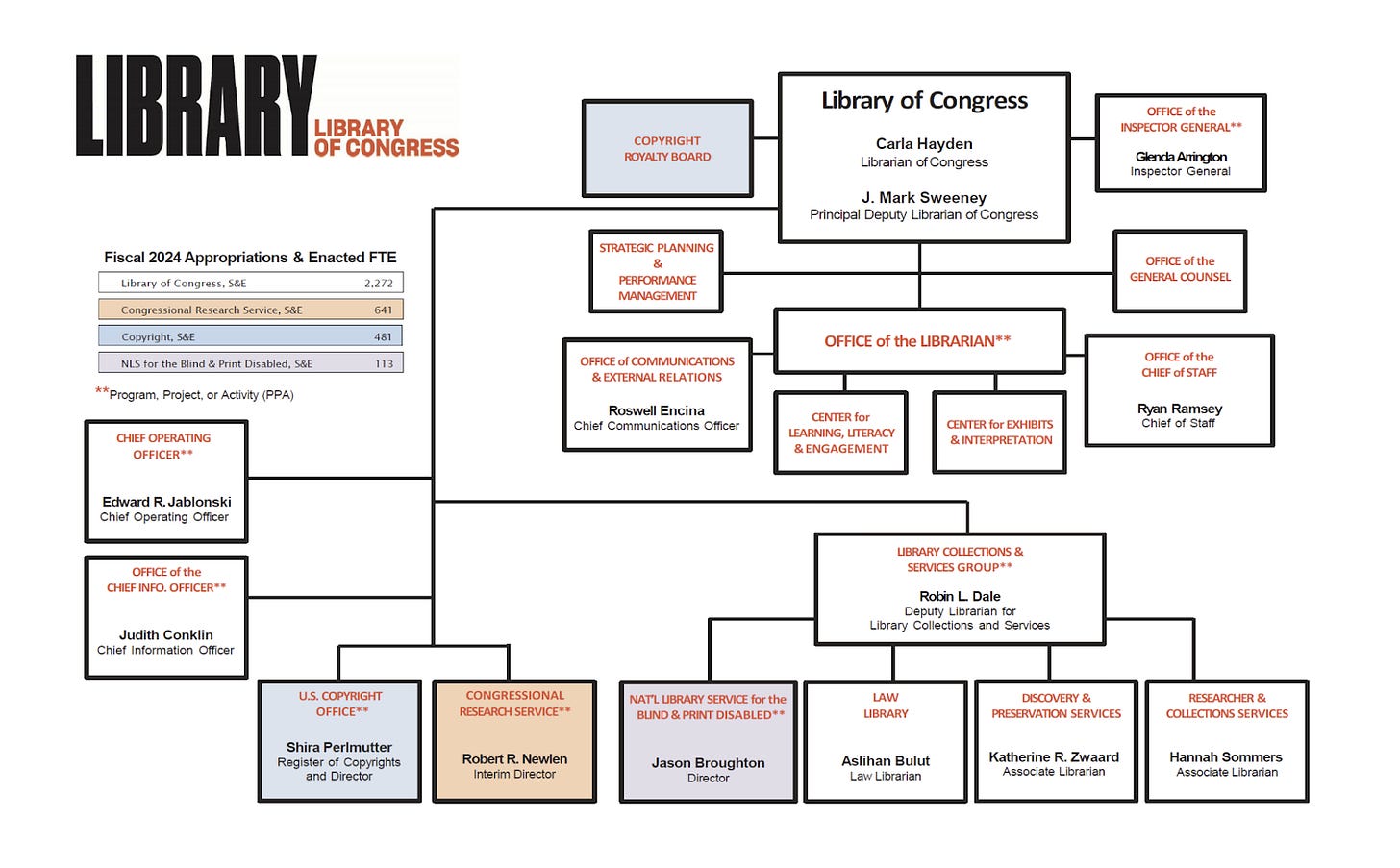Congress’s Librarian, Fired by the President
beSpacific 2025-05-15
First Branch Forecast: “Congress’s Librarian, Fired by the President The presidential firing of Dr. Hayden raises serious questions about legislative independence. On Thursday, President Trump fired Librarian of Congress Carla Hayden. Dr. Hayden became the 14th Librarian of Congress in 2016. In that role, she oversaw the Library of Congress, a major legislative support agency. She was appointed for a ten -year term, which this dismissal cuts short.. This matters because it represents the second branch of government—the Executive—making decisions about the operations of the first branch—Congress. While this may conform to the letter of the law, it violates long-standing principles and practices under which Congress determines the operations of its own branch.
Legislative Branch Agencies – The Library of Congress is part of a constellation of Legislative Branch agencies that provide support to Congress. The major legislative branch agencies include:
- The Architect of the Capitol, responsible for buildings and facilities ($950 million in FY 2024)
- The Capitol Police, which provides security for the legislative branch ($790 million in FY 2024)
- The Government Accountability Office, which audits and investigates federal programs ($810 million in FY 2025)
- The Congressional Budget Office, which provides estimates on federal spending ($70 million in FY 2024)
- The Government Publishing Office, which publishes executive, legislative, and judicial information in print and digital formats ($131 million in appropriations in FY 2024, although more than a billion using reimbursable funds)
A number of smaller agencies also exist. How does the Library of Congress fit within this constellation of agencies? The Library of Congress has a roughly $850 million budget and approximately 3,500 employees in FY 2024. It houses a number of agencies and functions, including:
- The Congressional Research Service: provides confidential research and advice to Congress as well as supporting the work of public-facing resources like Congress.gov ($132 million; 600 staff)
- The Library Collections and services group: includes the Law Library of Congress that collects domestic and foreign law materials and publishes analysis of international law; the Collections Services that acquires documents; and Discovery and Preservation services that makes it easier for users to find information by cataloging it and adding metadata ($267 million; 1,344 staff)
- The Copyright Office: allows people to copyright their works and resolves disputes ($103 million; 478 staff)
- The National Library Service for the blind and disabled: makes documents and periodicals available to persons with visual disabilities ($66 million; 113 staff)
There are other functions as well, such as the CIO’s office with a $168 million budget and 404 staff. Organizational Chart of the Library of Congress. Together, these agencies are the machinery of Congress. Yet some are still wired to the Executive.”
